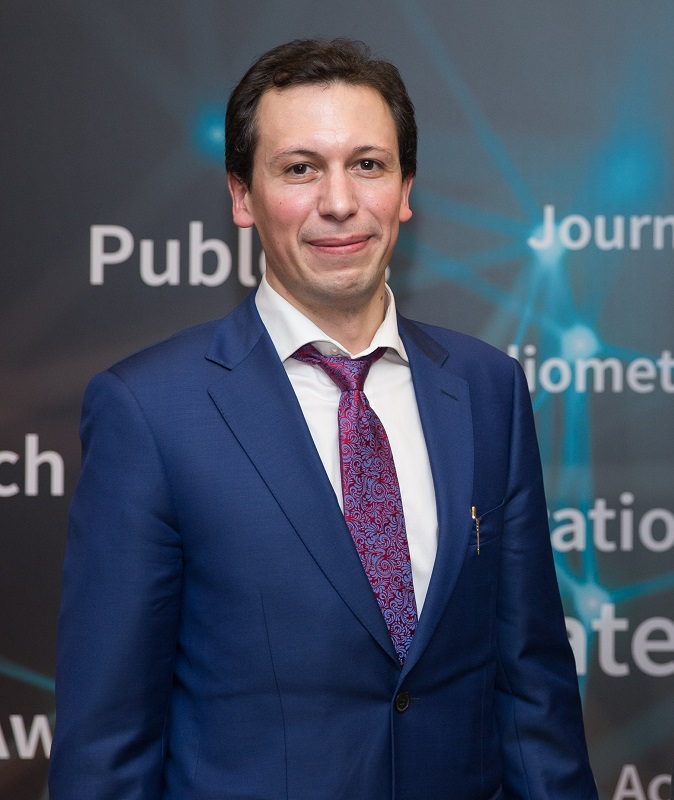Recording: https://disk.pku.edu.cn:443/link/3CD00DB7B77A6C23A67553D7E98F71B1
Valid Until: 2027-04-30 23:59
Abstract: The development of the theory of global stability, the theory of bifurcations, the theory of chaos, and new computing technologies made it possible to take a fresh look at a number of well-known theoretical and practical problems in the analysis of multidimensional dynamical systems and led to the emergence of the theory of hidden oscillations which represents the genesis of the modern era of Andronov’s theory of oscillations. The theory of hidden oscillations is based on a new classification of attractors as self-excited or hidden. While trivial attractors (equilibrium points) can be easily found analytically or numerically, the search for periodic or chaotic attractors may turn out to be a challenging problem (see, e.g. famous 16th Hilbert problem on the number and disposition of limit periodic oscillations in two-dimensional polynomial systems which is still unsolved). Self-excited attractors can be easily discovered when observing numerically the dynamics with initial data from the vicinity of the equilibria. While hidden attractors have basins of attraction, which are not connected with equilibria, and their search requires the development of special analytical and numerical methods.
For various applications, the transition of the system’s state to a hidden attractor, caused by external disturbances, may result in undesirable behavior and is often the cause of accidents and catastrophes. For various engineering applications the importance of identifying hidden attractors is related to the classical problems of determining the boundaries of global stability in the space of parameters and in the phase space. Outer estimations of the global stability boundary in the space of parameters and the birth of self-excited oscillations in the phase space can be obtained by the linearization around equilibria and the analysis of local bifurcations and are related to various well-known conjectures on global stability by the first approximation (see, e.g. Andronov’s proof of the conjecture on the Watt regulator global stability by the first approximation, Aizerman and Kalman conjectures). Inner estimations of the global stability boundary can be obtained by classical sufficient criteria of global stability. In the gap between outer and inner estimations, there is an exact boundary of global stability which study requires the analysis of nonlocal bifurcations and hidden oscillations.
This lecture is devoted to well-known theoretical and practical problems in which hidden attractors (their absence or presence and disposition) play an important role [1-7].
References
1 N. Kuznetsov, Invited lecture "Hidden attractors in science and technologies", Academy of Finland, 2021 (https://www.youtube.com/watch?v=-CzGtbfi8g0)
2 Kuznetsov N.V., Theory of hidden oscillations and stability of control systems, Journal of Computer and Systems Sciences International, 59(5), 2020, 647-668 (https://doi.org/10.1134/S1064230720050093)
3 Kuznetsov N.V., Lobachev M.Y., Yuldashev M.V., Yuldashev R.V., Kudryashova E.V., Kuznetsova O.A., Rosenwasser E.N., Abramovich S.M., The birth of the global stability theory and the theory of hidden oscillations, Proc. of European Control Conf. (ECC-2020), St. Petersburg, 2020, 769–774 (https://dx.doi.org/10.23919/ECC51009.2020.9143726)
4 Dudkowski D., Jafari S., Kapitaniak T., Kuznetsov N.V., Leonov G.A., Prasad A., Hidden attractors in dynamical systems, Physics Reports, 637, 2016, 1-50 (https://doi.org/10.1016/j.physrep.2016.05.002)
5 N.V. Kuznetsov, T.N. Mokaev, O.A. Kuznetsova, E.V. Kudryashova, The Lorenz system: hidden boundary of practical stability and the Lyapunov dimension, Nonlinear Dynamics, 102(2), 2020, 713-732 (https://doi.org/10.1007/s11071-020-05856-4)
6 N. Kuznetsov, T. Mokaev, V. Ponomarenko, E. Seleznev, N. Stankevich, L. Chua, Hidden attractors in Chua circuit: mathematical theory meets physical experiments, Nonlinear Dynamics, 111, 2023 5859–5887, https://doi.org/10.1007/s11071-022-08078-y
7 Wang X., Kuznetsov N.V., Chen G., Chaotic Systems with Multistability and Hidden Attractors, Springer, 2021 (https://doi.org/10.1007/978-3-030-75821-9)
Bio: Nikolay V. Kuznetsov graduated from St. Petersburg University in 2001. He received the Candidate of Science degree and the Doctor of Science degree in 2004 and 2016, respectively, both from St. Petersburg University. In 2008, he defended his Ph.D. degree at the University of Jyvaskyla (Finland), where now is Visiting Professor. He is currently a Full Professor (tenured) and Head of the Department of Applied Cybernetics, St. Petersburg University. Since 2018, he is Head of the Laboratory of information and control systems at the Institute for Problems in Mechanical Engineering of the Russian Academy of Science. His research interests include nonlinear control systems, stability and oscillations in dynamical systems, theory of hidden oscillations, hidden attractors, and phase-locked loop nonlinear analysis. Prof. Kuznetsov was included in the worldwide list of Highly Cited Researchers (Web of Science) in 2019–2021. The research group chaired by Prof. Kuznetsov has been awarded the status of the Leading Scientific School (Center of Excellence) in the field of mathematics and mechanics, since 2018. In 2020, he was elected a foreign academician of the Finnish Academy of Science and Letters and was named Professor of the Year in the field of mathematics and physics. He was awarded the St. Petersburg University Prize in 2020 and the Afraimovich Award in 2021 for the theory of hidden oscillations and stability of dynamical systems. In 2022, he was elected a member of the Russian Academy of Science.
